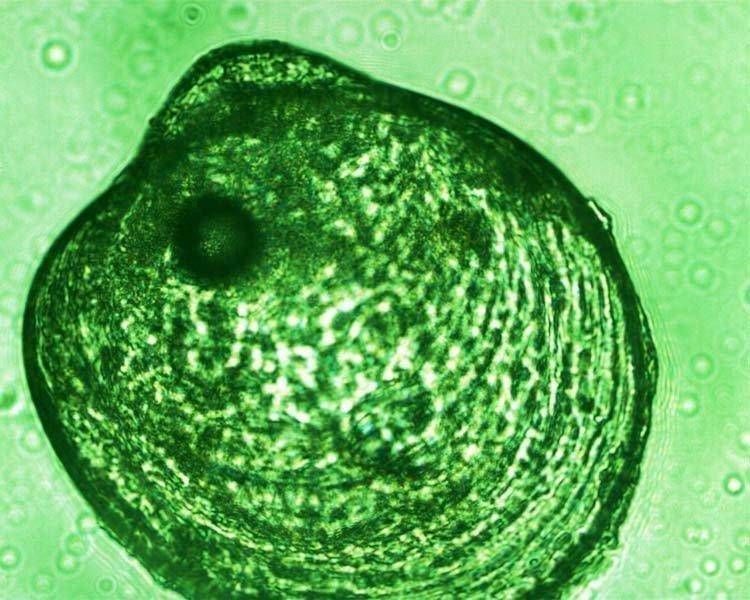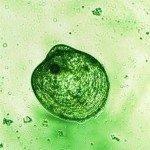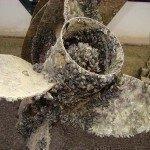Utah Division of Wildlife Resources Press Release
Starting immediately, you must decontaminate your boat before you leave Deer Creek Reservoir in north-central Utah.
The requirement comes after DNA tests conducted by two laboratories found microscopic juvenile quagga mussels, called veligers, in a water sample taken at the reservoir.
Jordan Nielson, aquatic invasive species coordinator for the Division of Wildlife Resources, said the discovery does not mean Deer Creek Reservoir is infested with quagga mussels.
“We’ve found veligers in the past at other waters in Utah,” Nielson stated. “With the exception of Lake Powell, mussel populations never established themselves in the waters where veligers were found. We’re hoping that will be the case at Deer Creek too.”
Nielson said quagga mussels usually do not reproduce in water that’s colder than 50 degrees, so even if there are adult mussels in the reservoir, there’s currently little risk of the population expanding. That could change, though, once the water starts to warm in the spring.
One item biologists and water managers are concerned about now is mussels being carried to other waters in or on boats. That’s why DWR Director Greg Sheehan signed an order on Jan. 15 that requires boats to be decontaminated before leaving Deer Creek State Park. Upon leaving the park, boaters must do one of two things:
*Clean and drain their boat, on their own,” he said. “After cleaning and draining, a DWR or Utah State Park technician will place a tag on the boat that indicates when it was cleaned and drained. The boat will not be allowed to launch at another body of water in Utah until the boat has dried long enough to kill any mussels that might be in or on it.
In the winter, boats must dry for at least 30 days. The drying time can be as little as three days, though, if the temperature the boat is drying in remains below 32 degrees Fahrenheit for at least 72 straight hours.
*Have their boat professionally decontaminated,” Sheehan also suggested. “The service is free. A DWR or Utah State Parks technician will determine whether the boat needs to be professionally decontaminated.”
Nielson said the presence of veligers in the reservoir does not mean a quagga mussel population has established itself there. “To establish itself, a quagga population needs adult mussels,” he explained. Which raises the question, if there aren’t any adult mussels in the reservoir, where did the juvenile mussels come from?
“This could be an isolated incident,” Nielson stated. “For example, it’s possible that the veligers made their way to the reservoir in or on a boat that had been on a contaminated water. We’ll know a lot more after we and our partners conduct further surveys this spring.”
What’s next?
This spring, the DWR and its partners, including Utah State Parks and the Bureau of Reclamation, will take action to learn whether adult quagga mussels are in the reservoir. That action includes:
* Collecting and analyzing water samples.
* Sending divers into the reservoir to search for mussels.
* Placing substrate samplers in the water. Adult quaggas attach to these as they move through the water.
* Surveying shorelines.
Water from the reservoir flows into the lower Provo River and then into Utah Lake. Nielson said quagga mussel sampling work has been underway at Utah Lake for years. The sampling work will continue in 2015.
Starting this spring, biologists will also sample the lower Provo River.
Nielson said the middle Provo River, the section between Jordanelle and Deer Creek reservoirs, is less at risk.
“Quaggas can’t move upstream,” he indicated. “The only way they could make their way to the middle Provo River is if they were transported there on someone’s boots or fishing equipment.”
- Quagga mussel veliger from Deer Creek Reservoir. This is how a veliger looks under a microscope. Photo courtesy of DWR.
- Quagga mussel veliger from Deer Creek Reservoir. This is how a veliger looks under a microscope. Photo courtesy of DWR.
- Water managers and wildlife biologists hope they don’t find adult quagga mussels in Deer Creek Reservoir this year. This photo of adult quagga mussels was taken at Lake Mead a few years ago. Photo courtesy of DWR.




